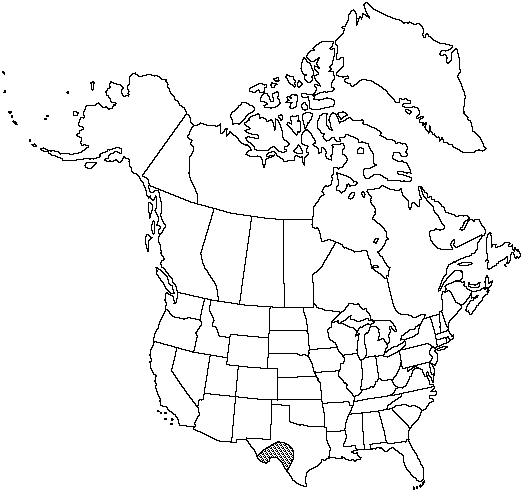Cheilanthes kaulfussii
Linnaea 13: 145. 1839.
Stems short-creeping, usually 4–8 mm diam.; scales uniformly black or with narrow brown margins, linear-subulate, straight to slightly contorted, strongly appressed, persistent. Leaves clustered, 8–35 cm; vernation circinate. Petiole dark-brown, flattened or slightly grooved distally on adaxial surface. Blade elongate-pentagonal, 3-pinnate-pinnatifid to 4-pinnate at base, 3–10 cm wide; rachis grooved adaxially, lacking scales, with monomorphic pubescence. Pinnae not articulate, dark color of stalk continuing into pinna base, basal pair larger than adjacent pair, strongly inequilateral, proximal basiscopic pinnules greatly enlarged, appearing glandular-pubescent adaxially. Costae green or straw-colored adaxially for most of length; abaxial scales absent. Ultimate segments linear-oblong, not especially beadlike, largest 3–8 mm, abaxially and adaxially glandular-pubescent with short, sticky, capitate glands. False indusia marginal, weakly differentiated, 0.05–0.25 mm wide. Sori usually discontinuous, concentrated on apical and lateral lobes. Sporangia containing 32 spores.
Phenology: Sporulating summer–fall.
Habitat: Rocky slopes and ledges, usually on igneous substrates
Elevation: 300–2500 m
Distribution

Tex., Mexico, Central America, South America
Discussion
The few populations of Cheilanthes kaulfussii known in the flora produce 32 spores per sporangium and reproduce apogamously (D. M. Benham 1982). Although the chromosome number of North American specimens has not been established with certainty, the specimens appear to be polyploids that may have been derived from 64-spored Mexican populations through autopolyploidy. The species is quite distinctive and should not be confused with any other member of the flora.
Selected References
None.